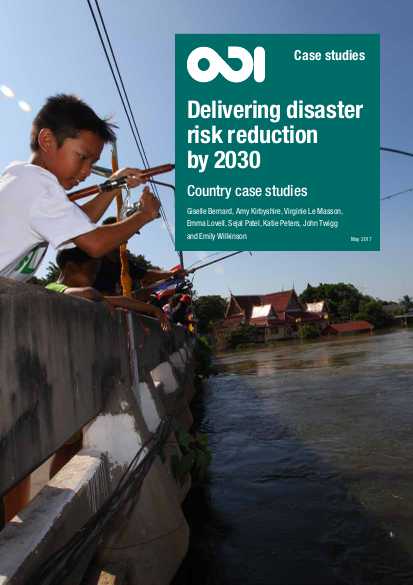Case Studies

The pressure is on for signatories to the Sendai Framework for Disaster Risk Reduction 2015–2030 (SFDRR) to achieve and demonstrate a reduction in disaster losses by 2030. This report aims to help national governments, their sub-national counterparts, and donors better understand the pace of change required to deliver on the seven global targets of the SFDRR by 2030. To do so, the report systematically reviews governments’ own reporting on progress against the previous framework for DRR, the Hyogo Framework for Action (HFA), the type of which has not been done. This grounds recommendations for what should happen next in a deeper understanding of historical pathways for change.
An impressive number of DRR activities were conducted during the 10 years of the HFA, demonstrating commitment by governments to act to manage risk. Countries in very different economic situations and with diverse risk profiles prioritised many of the same activities, such as incorporating DRR in school curricula and running public-awareness campaigns.
But a fundamental shift is required to achieve the SFDRR: national governments will need to focus not only on these pragmatic measures, but also take a more strategic approach – one that will require deeper engagement with civil society and the private sector.
Countries will need to work on two tracks:
- Prioritising initiatives that are catalytic, making more effective use of external funding and accelerating other agendas.
- Developing a longer-term strategy for institutional change on DRR, backed by national financing mechanisms.
Neither track is a ‘quick win’ but will bear fruit over the longer term.